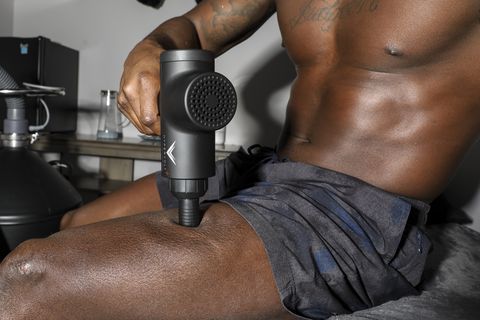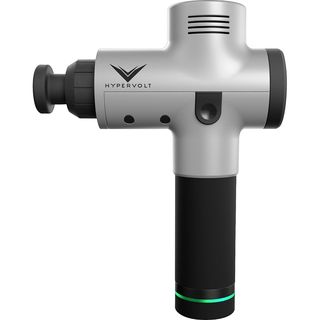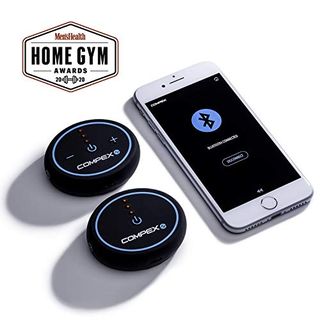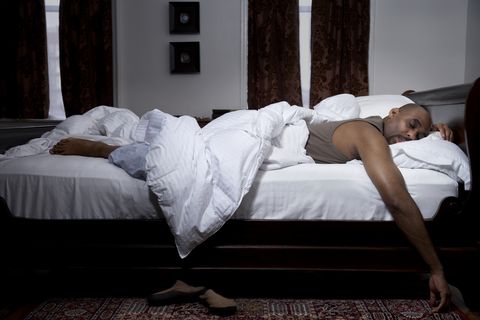https://aboriginalhealth.net/top/doxycycline-hair-loss/
Sal Tobia, 30, a small-business owner who works in Little Falls, New Jersey, wasn’t sure exactly what he needed when he hobbled into ChillRx in Montclair. All he knew was that months out from the 2019 New York City Marathon, his right hip was screaming. Three minutes of whole-body cryotherapy and 30 minutes of pneumatic–compression-boots treatment later, the screaming was gone, and Tobia was hooked. He went to ChillRx for the next 14 days straight and eventually ran a 4:26 in his first marathon. “Without the recovery,” he says, “I would have died.”
Exaggeration aside (no, Sal, you wouldn’t have died), it was a success story for the emerging, tech-infused recovery industry, which claims it can help you bounce back from workouts and injuries with infrared this, massage that, and air-pressure pods that look like they were designed for Elon Musk’s Mars transport system.
For decades, exercise helped people push their body to its limits, but the only recovery tools were protein shakes, stretching, and ice. Today’s recovery industry comes in a host of packages. There are boutiques like Nordic Edge, a New York–area chain that packs cryotherapy, infrared-sauna treatments, and more into one building, and Salt + Sweat, which features infrared–light therapies and salt rooms, where you inhale salt to clear airways.
CrossFit boxes and group–fitness studios are offering services on-site, and chains like Equinox provide compression–recovery boots, foam–rolling workshops, and other treatments at select locations. The home-recovery market is also booming: Netflix-and–relax your sore muscles in your own living room with a massage gun, vibrating foam roller, or electrical-stimulation unit.
Does Next-Gen Recovery Work?

Krista Schlueter
The issue: The road to optimal muscle recovery isn’t linear, and it certainly isn’t easy to understand. The recovery industry is innovating faster than researchers can study it, so science can’t reliably claim that, say, cryo healed Tobia’s hip. That doesn’t stop boutiques from charging big money. Do you really need all this after a 20-minute run? Massage guns are great, but do they do anything a foam roller can’t? “The normal person, they’re not training hard enough to need all these recovery strategies,” says muscle researcher Brad Schoenfeld, C.S.C.S., Ph.D.
But while you may not be pummeling your body like a pro athlete, you are doing plenty to damage it, says Kara Shull, D.P.T., C.S.C.S., of New York City’s Movement2live. And unlike a pro, you aren’t getting the recovery that comes with regular movement. “The common person who is sitting at a desk all day almost needs it more,” Shull says.
You’re not being battered by two-a-days, but in an always-on world, you are constantly being peppered by stressors that hot-wire your sympathetic nervous system. That’s a problem, because your body can’t heal unless you’re in a parasympathetic state. (Grossly simplified, one state is alert, with your brain, heart, and internal organs optimized to fight or flee; the other is relaxed, with a slower heart rate and organs doing maintenance.) “Whatever you can do to get your body relaxing, even if it’s a placebo, will help you heal,” says MH advisor Dan Giordano, D.P.T., C.S.C.S., of Bespoke Treatments.
But what will help you heal? Experts preach mastery of the basics first. (See “The OG Rules of Recovery,” right.) They make few blanket statements about the next-gen recovery revolution, since what helps one body doesn’t work for another. So gauge things yourself, using what physical therapist Kelly Starrett, D.P.T., calls the Golden Recovery Rule: Performance is the judge. “Good recovery isn’t about how you feel now,” he says. “It’s about how you feel during your next workout.”
Not sure whether your muscle-optimization plan (heck, or ours) was effective? Track your performance in your next workout and let that be your litmus test. “You know a treatment is working for you if it allows you to perform higher amounts of work more often,” says Starrett.
Your Ultimate Guide to Recovery Treatments
Not every therapy will do it for you, but these strategies are a starting point for navigating an ever-changing (and sometimes overhyped) recovery landscape. (And if you want more on recovery, check out this story, too.)
Infrared Light Works, But Choose The Right One

Krista Schlueter
Far-infrared saunas heat up using far–infrared light instead of steam. They’ll get you to sweat, and studies show they’ll also up blood circulation. Just hydrate before entry; you’ll leave drenched. If you want even more infrared benefits, search for near-infrared studio booths. New science has found they can boost energy and stimulate mitochondrial activity. Added advantage: You won’t sweat as much.
Go Hard at Cryotherapy if You Do It
Your average cryotherapy session has you spending up to three minutes in a booth cooled to around -160 degrees with nitrogen gas. Proponents claim it improves sleep and spikes metabolism, and several small studies support this. One deep-dive review of six studies involving 257 rheumatoid-arthritis patients also showed it reduces pain. The catch? Consistency: Studies observed benefits after seven or more straight days of cryo. One session a week won’t help. Can’t make it daily? Find at least some regularity, going two or three times weekly for three weeks.
Time Your Use of Compression Boots
Pneumatic-compression boots and sleeves like NormaTec’s zip onto your limbs, then use air pulses to push fluids. In theory, that improves blood flow, although a recent study of cyclists couldn’t link boot usage to improved performance. Still, pro athletes love them, and Paul Winsper, Under Armour’s VP of athlete performance, believes in them, too—as long as you don’t rush into them after your sweat sesh. Postworkout soreness, he says, is critical for gains. That’s when the body releases inflammatory cytokines, which repair tissue. “This is essential to stimulate the positive adaptation to training,” Winsper says. Wait at least an hour after your workout to slip on compression boots.
Be Gentle With Your Massage Gun

Hypervice Hypervolt Cordless Vibration Massager
rei.com
$299.99
BUY IT HERE
Who doesn’t love a pulsating massage gun digging into their achy quads and forearms, right? Sure, your foam roller can do the same thing for a fraction of the cost, but the massage-gun surge continues. If you’re going to use one, just don’t dig in too much. Pressing the gun into your skin can bruise lymphatic vessels, delaying—not accelerating—recovery. “Float it,” says Giordano. “If you’re pressing, you’re already going too hard.” Just 120 seconds of gentle gunning will relax tight muscles. Hyperice’s Hypervolt is your best option.
Turn Up the Electrostim Pulse

Compex Mini Wireless Electric Muscle Stimulator
amazon.com
$205.99
BUY IT HERE
Electronic muscle stimulation has been around for decades, but it’s never been more affordable, with portable units from Marc Pro, Compex, and PowerDot going for as little as $200. Physical therapists use these same units to rehab injuries, and athletes who train hard (think cyclists, runners, and bodybuilders) swear by them after a workout. Aim for Compex’s Mini Wireless if you can. Whatever the unit, dial up the power until you feel a muscle contraction or see your muscle pulsing. Then leave it at that setting for 15 to 30 minutes. Technically, you can stim for up to 23 hours but . . . yeah, good luck with that.
Classic Ways to Recover Your Muscles

Sean JusticeGetty Images
The latest in cryo-infrared-vibrational-massage-compression tech won’t relax your sore muscles if you ignore these basics.
Sleep
“The basic foundation of all recovery efforts should be sleep,” says Winsper. Make whatever shut-eye you can get (ideally eight hours around the same time each night) count: Eliminate light, and sleep in a 60 to 67 degree room.
Move
To circulate blood and decongest tissues, “walking is our best technology,” Starrett says. Your body is designed to move, so pack at least 12,000 steps into every day, whether you’ve already worked out or not.
Fuel
“Don’t eat like shit,” says Giordano. “If you’re crushing your body with processed junk foods that cause inflammation, none of the other treatment options will benefit you.” And hydrate, people. Your muscles can’t rebuild without water.
Roll
Massage guns are great, but old-school rollers can promote blood flow, which may help break up soft-tissue adhesions and release fascia. Spend ten minutes rolling tight muscles before bed. But take it easy; bruising is bad.
Source: Read Full Article
